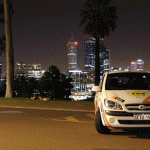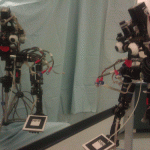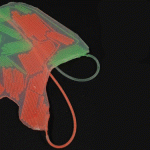
To demonstrate the reliability of the Edison nickel-iron battery, drivers rode a battery-powered Bailey in a 1,000-mile endurance run in 1910. Image: National Park Service
A century old design could be used in electric vehicles, much as Edison originally envisioned.
The nickel-iron battery, originally conceived by Thomas Edison over a century ago, is back and better than ever thanks to scientists at Stanford University. The original model was designed in the early 1900s to power electric vehicles, however, due to its expensive nature and slow charge and discharge rate, went out of favour in the mid-1970s.
Stanford University scientists have dramatically improved the performance of this century-old technology. The researchers developed an ultrafast nickel-iron battery that can be fully charged in about two minutes and discharged in less than 30 seconds. The results were published in the journal Nature Communications.
“We have increased the charging and discharging rate by nearly 1,000 times,” said Stanford graduate student Hailiang Wang, lead author of the study, in a press release. “We’ve made it really fast.”
The new battery can store and release energy so quickly that it could be a boon for renewable energy industries. It may also help power cars, as Edison originally envisaged.
The nickel-iron battery uses an electrolyte of potassium or sodium hydroxide and contains no lead or other heavy metals. It poses no risk of acid spills, and its construction and disposal wouldn’t cause significant environmental damage. Researchers improved the battery’s performance by adding graphene to speed up its charge and discharge time.
“In conventional electrodes, people randomly mix iron and nickel materials with conductive carbon,” Wang explains. “Instead, we grew nanocrystals of iron oxide onto graphene and nanocrystals of nickel hydroxide onto carbon nanotubes.”
This produced strong bonds between the metal and the carbon nanomaterials, which allow the charges to move quickly between the electrodes and the external circuit. The only problem is that the improved charge and discharge speeds mean that the battery is now more fragile.
“It doesn’t have the charge-discharge cycling stability that we would like,” says Hongjie Dai, professor of chemistry. “Right now it decays by about 20 per cent over 800 cycles. Ideally, we don’t want it to decay at all.”
Dai sees the redeveloped battery as an exciting advancement in renewable energy, as a boost for lithium-ion batteries in cars, and potentially for the military, where the rapid discharge of power could prove useful. “I think Thomas Edison would be happy to see this progress,” he says.
Source: Stanford University






